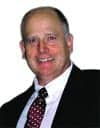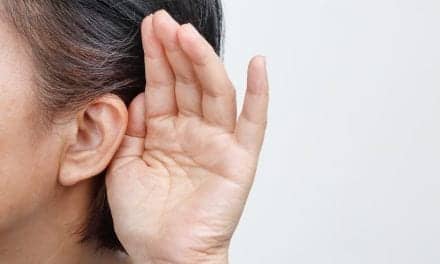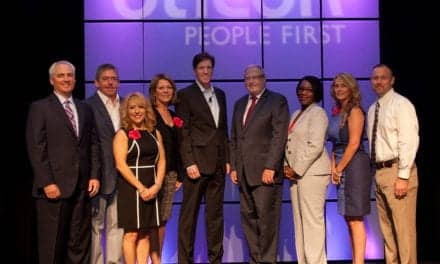
Very few people can say they have created a new medical paradigm, but Leon C. Hirsch has managed to do just that—three times.
Hirsch founded United States Surgical Corporation, a company that revolutionized surgery with the introduction of surgical stapling. He created a second surgical revolution with the creation of the first laparoscopic instruments for gallbladder procedures, which reduced hospital stays from 8 days to 1 day, and reduced recovery time from 8 weeks to 3 days. Hirsch’s latest achievement is Vivatone Hearing Systems LLC, the Trumbull, Conn, manufacturer of Vivatone Hearing Care Instruments. He is chairman of the company.
The inspiration for Vivatone’s creation and dedication to helping individuals with hearing loss stems from Hirsch’s own experiences with moderate hearing loss and subsequent fitting for hearing aids.
Hirsch says the hearing device he received in 2003 was arguably the finest hearing aid commercially available, and his hearing did significantly improve. That benefit was significantly tempered, however, by what he refers to as its “side effects”—mainly the occlusion and feedback. “Every time I went to talk in a meeting, I took my hearing aids out because I just couldn’t handle the occlusion,” Hirsch says. “When I spoke, I sounded like I was in a barrel. I couldn’t speak on the telephone without a whistling in my ear.”
Hirsch was told he would eventually “get used to it.” Much to his amazement, Hirsch also found that many of his friends with hearing loss had hearing aids that stayed in a drawer, instead of their ears, for the same reasons: They could not handle the devices’ occlusion and feedback. “I never talked to people about hearing aids before because I wasn’t involved with it, but when I got involved with this, I found that there were so many people with the same problem,” Hirsch says. “I was surprised at how many people had hearing aids that were sitting in drawers.”
Despite the assurances to the contrary, Hirsch did not get used to the problems associated with his hearing aids. “You don’t get used to them, believe me,” Hirsch says.
After a month of continuous auditory feedback, he returned to his audiologist, declaring that he would prefer to live with his hearing loss rather than continue to endure the annoying feedback, occlusion, and discomfort. Hirsch’s audiologist, Natan Bauman, EdD, MS Eng, CCC-A, the former head of the Department of Audiology at Yale University, informed Hirsch that this was not the first time one of his patients had complained. Bauman told Hirsch there was an alternative that Hirsch might wish to consider, but that the instrument was not commercially available; Bauman had invented something new on paper, but had no product.
Hirsch tried Bauman’s creation. Hirsch was able to finance and direct the creation of the first Vivatone prototype. The device not only improved his hearing, but it did so without the occlusion and feedback that plagued him before. “The major difference was that I didn’t have any occlusion. I could hear myself talk in a natural voice,” Hirsch says.
Establishing a new company
With 40 years of experience in product development, marketing, and distribution behind him, Hirsch, a venture capitalist, formed Vivatone Hearing Systems in 2004 to bring Bauman’s creation—and subsequent improvement in hearing—to the masses. “I said to myself, ‘If this thing is so good for me, it’s going to be good for other people,” Hirsch says, “and it has been.”
Vivatone Totally Open Canal™ (TOC) technology leaves the ear canal open. The tiny receiver is easily concealed within the ear without blocking the ear canal. Properly inserted, the small lightweight device is virtually invisible. Vivatone hearing aids do not require ear molds, and can be fit by practitioners in 10 to 15 minutes, making them ready-to-wear for patients.
Vivatone consists of a small BTE unit housing a microphone, an advanced technology digital sound processor (DSP), a battery compartment, and a memory controller switch. The receiver unit is a very thin wire fiber connecting the DSP unit with the patented in-ear speaker. Emanating from the speaker is a nearly invisible locking wire that is shaped to fit the contours of the ear. Unlike conventional ITE or BTE ear molded devices, the TOC design enables the ear to “breathe” in a natural fashion; the sebaceous glands in the ear canal retain their normal degree of function and will not precipitate increased levels of moisture, microorganisms, or cerumen.
Vivatone open-fitting hearing devices virtually eliminate insertion loss as the electronic transmission of sound replaces the distortion-producing sound tube. Vivatone hearing aids use an extremely small, high-precision, electromagnetic speaker that is located in the ear while keeping the ear canal open. This approach leverages the natural resonance of the open ear, which provides optimal hearing for speech, by mixing natural and device-amplified sounds. This allows people with mild to moderate hearing loss to enjoy high frequency improvement while maintaining the ear’s ability to perceive lower frequencies without interference. The net effect is more natural sound and a greatly improved range of amplification, especially in the mid-range, human speech frequencies (the most common area of loss) without echo, distortion, sound peaks, whistling, or feedback.
Vivatone reduces feedback in four ways: it separates the microphone from the speaker by 4 cm, a critical margin that greatly reduces the possibility of feedback; it delivers sound to the ear directly from the receiver rather than through a sound tube, so there are no prefeedback resonance peaks; it virtually eliminates insertion loss through its design, eliminating the requirement for extra feedback-inducing amplification; and its proprietary antifeedback sensor technology identifies and cancels feedback across a greater spectrum of frequencies.
Since Vivatone’s design results in no insertion loss and causes no change in natural ear resonance, efficiency can be gained using a low gain amplifier. The Vivatone device needs only to reduce output slightly, whereas a conventional hearing aid has to use a low compression threshold and a high compression ratio to keep the sound within the patient’s hearing comfort range. Vivatone uses advanced, adaptive filtering with modified least mean square (LMS) algorithm for reduced feedback without lowered gain.
“It looks very similar to other open ear products, but that’s where the similarity ends,” Hirsch says. “We have placed the receiving unit in the ear canal, which gives much better sound, but it gives a lot of other things too. For example, on all the other open ear products, the processor is right next to the receiver—the problem with that is you set up a feedback loop and it restricts the amount of gain you can give a patient. With Vivatone, the receiver and the processor are separated by 4 cm—that’s a lot. So, you don’t have the feedback loop, and you can get more gain with less feedback
“You also get much crisper, clearer sound because we don’t transmit our sound through a tube; we transmit it electronically, right into the receiver,” Hirsch says.
While Vivatone hearing aids are designed for patients suffering from mild to moderate hearing loss, at present, the devices are not recommended for severe hearing difficulties.
A Wide Variety of Listening Environments
The Vivatone hearing instrument may be programmed with up to four memory settings for a wide variety of listening environments, from concert halls to crowded rooms to intimate conversations.
“At US Surgical, our strength and success were achieved by building a trusting relationship with nurses, physicians, surgeons, and hospital administrators. By delivering innovative products, we were able to make a valuable contribution to the quality and length of many lives. I believe it will be quite obvious to audiologists as well as patients that the patented Vivatone technology is superior to virtually any BTE, CIC, ITE, or ITC device,” says Rick Hudson, head of the company’s sales and marketing efforts in the United States.
Vivatone Hearing Systems has expanded to bring its TOC technology to audiologists in the United States, Canada, Western Europe, and Latin America. The company has plans in place to expand into Eastern Europe, the Middle East, and Asia.
“We recognize the immense, worldwide market potential for Vivatone. We have already enjoyed a tremendous response in Western Europe, and we do hope to expand this interest to other continents,” says Asela Jayampathy, head of international sales.
Besides his plans to build Vivatone into a major hearing aid company, Hirsch’s business philosophy is quite simple: “Take care of the customer and you’ll make money. That’s it.”
Danielle Cohen is a staff writer for Hearing Products Report.





